Chmod Command Examples In Linux
$ chmod OPTIONS MODE filename Only the root user or a regular user with sudo privileges can change file or directory permissions.
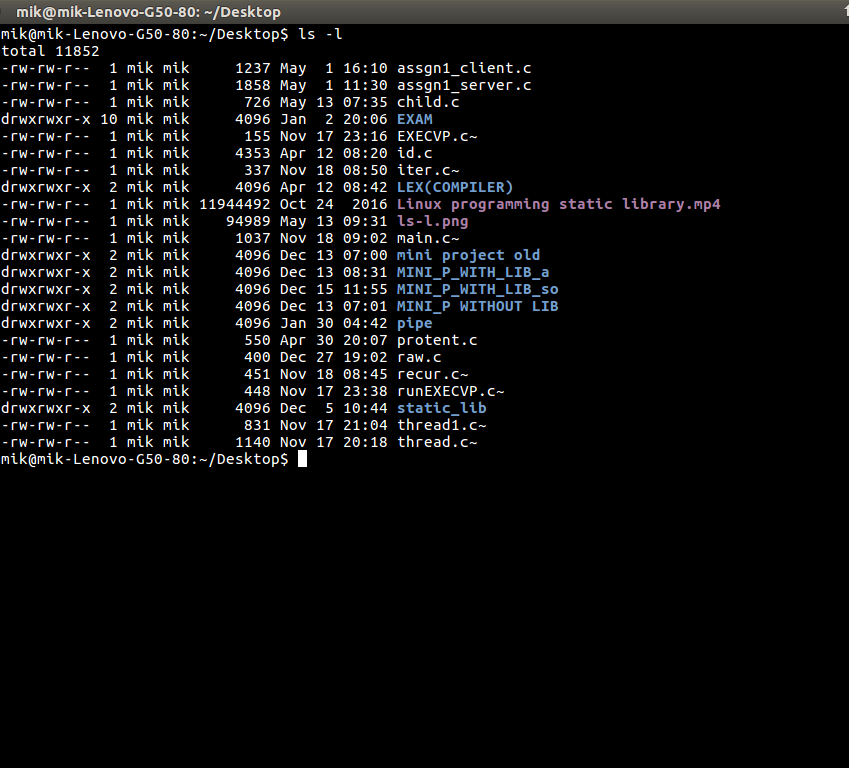
Chmod command examples in linux. I have discussed how to gzip a folder in Linux in the past. In this file example, sets read and write permissions for user and group:. But first let’s take a look at the syntax of scp command:.
It’s a same as using your mouse to right-click a file or folder and selecting the permission tabs and. In Linux / Unix systems, accessibility to files and directories is determined by file ownership and permissions. The general syntax to recursively change the file’s permissions is as follows:.
Ls — List the contents of a directory or directories. The equals sign (" = ") means "set the permissions exactly like this," and the letters " r ", " w ", and " x " stand for "read", "write", and "execute", respectively. If you have a zip compressed file, you can unzip it in the Linux command line.
Basic “chmod” Command examples in Linux. As you can see current permission on this directory is 0755. The weird strings you see on each file line, like drwxr-xr-x, define the permissions of the file or folder.
Following are the examples of chmod commands in Linux explained in detail. We want the user dave to have read and write permissions and the group and other users to have read permissions only. Linux Chgrp Command for Beginners (5 Examples) Chmod.
It is common to use the basic chmod command to change the permission of a single file. Repulsively remove the write permission for other users:. The numeric value can take 3 or 4 numbers.
We have already described the Linux file permissions. Linux chmod command tutorial for beginners. Let’s check the new permission on this file:.
$ chmod a+r sample.txt Make a file readable and writable by the group and others. To have combination of permissions, add required numbers. -r--rw-r-- mik mik assgn1_client.c Before :.
$ sudo chmod OPTIONS numeric_value filename. Chmod permissions file OR:. In this article, you will learn how to change permissions of any file or directory with chmod command.
In the above example, you can see that the permissions are specified with a three digit number. Following are some examples:. Linux chmod command is used to change the access permissions of files and directories.
The letters u, g, and o stand for " user ", " group ", and " other ". Read, write and execute:. Chmod u=r assgn1_client.c AFTER:.
It’s time to see various usage of the unzip command. This type of restriction is useful for effective file/folder management, securing system and providing a level …. However, you may need to modify the permission recursively for all files within a directory.
The first digit is for user permissions, second is for group and third is for others permission. Chmod special modes Setuid and setgid. Chmod -R o-w dirname.
One example is chmod u=rwx,go=rx,o+t. When setting permissions using the numeric style/notation, use the syntax shown below:. Deny execute permission to everyone.
The command is relatively simple to use and involves using. Chmod octal value file-name. The chmod command in Linux is used to change file and directory permissions using either text (symbolic) or numeric (octal) notation.
The syntax for changing the file permission recursively is:. To recursively operate on all files and directories under a given directory, use the chmod command with the -R, (--recursive) option. In this tutorial, I am going through the steps to create a bash script and to make the script executable using the chmod command.
Chmod stands for “Change Mode” and is used to modify the permissions of files and directories in a Linux based system. Mykyta Dolmatov / Getty Images. There are three basic modes to files and directories:.
Let us take an example where a file test_file.txt has full permission to the owner, group and other. Linux chmod command is used to change access permissions of files and directories. $ chmod a-x sample.txt Allow read permission to everyone.
Learn how chmod command is used to manage Linux permission levels (user, group and other) and types (read, write and execute) step by step with practical examples. Using the “=” operator means we wipe out any existing permissions and then set the ones specified. Chmod — Change the permissions of files or directories.
This example uses symbolic permissions notation. For example, if you have a binary file (say helloWorld), and you want to make it executable, you can run the following command:. $ chmod 777 file.txt (or) $ chmod ugo+rwx file.txt Give execute privilege to user.
Examples of chmod Command in Linux. Several symbolic methods are equivalent;. Chmod permission1_permission2_permission3 file When using chmod, you need to be aware that there are three types of Linux users that.
Depending on the origin of the file to be copied, the source can either be client or server. To check the options that are available in chmod, we can do by using Linux command:. Actually, chmod Command in Linux plays a greater role to keep all the files and directories of the system safe and secure so that no unauthorized person.
Chmod Command using Operator Method. By using this command, we can set the read, write, and execute permissions for all three of the permission groups (Owner, Group and Other) in Linux. Linux File Permission :.
For example, for read and write permission, it is 4+2 = 6. Chmod is a Linux command that will let you "set permissions" (aka, assign who can read/write/execute) on a file. In this example, we are having a directory example whose permission can be checked by using ls -lrtd example command as shown below.
The chmod command, like other commands, can be executed from the command line or through a script file. However, in most cases, 3 numbers are used. The Linux command to change permissions on a file or directory is chmod, which we like to read as change file mode.
Let’s change the assgn1_client.c permission so that the owner cannot write(w) in the file but can only read it. The unzip command in Linux is quite versatile and you can use it do a lot more than just extracting zip file. Chmod u+rw,g+r,o+r Filename Numerical Way :.
The chmod command is used to define or change permissioins or modes on files and limit access to only those who are allowed access… It changes the mode of each FILE to MODE…. The chmod command stands for change mode… and it’s used to limit access to resources…. $ chmod u+x samplescript.sh.
Example 1) Assign permissions using numeric notation. In this tutorial, we will discuss the basics of this command as well as provide examples explaining how it can be used in various scenarios. Give the members of the group permission to read the file, but not to write and execute it:.
For example, to change file permissions of a file file1.txt, to say rw-r--r-- execute:. Chmod Linux command Syntax. It takes the following syntax:.
For Example, if you want to give Read & Write permission to User/Owner and Read permission to Group & Others using Alphabetical way then the command would be:. Setuid and setgid (short for 'set user ID upon execution' and 'set group ID upon execution', respectively) are Unix access rights flags that allow users to run an executable with the permissions of the executable's owner or group respectively and to change behaviour in directories. Scp <options> source_path destination_path.
The command chmod a+rwx is equivalent to chmod ugo+rwx. The chown command stands for “change owner” is used to change the owner. 4 – To give Read Permission 2 – To give Write Permission 1 – To give Execute Permission.
Chmod u=rx file (Give the owner rx permissions, not w) chmod go-rwx file (Deny rwx permission for group, others) chmod g+w file (Give write permission to the group) chmod a+x file1 file2 (Give execute permission to everybody) chmod g+rx,o+x file (OK to combine like this with a comma). In this quick tutorial, we will see how we can use chmod command in an Ubuntu machine to find, modify and remove user permissions from specific files which exist on the user’s file system. In such cases, the chmod recursive option (-R or --recursive) sets the permission for a directory (and the files it contains).
The chmod also called change mode that is used to change permissions of a given file according to a certain mode. It stands for change mode. The first step is to create a new text file with .sh extension using the following command.
3 chmod Examples Give read, write and execute to everybody (user, group, and others) read, write and execute = 4 + 2 + 1 = 7. If you are new to Linux, and are looking for a way to change file/directory permissions through the command line, you'll be glad to know there exists a command - dubbed chmod - that lets you easily do this. We can do using the following command:.
The letter a is a shortcut to assign permissions to all users. On a particular directory if you have multiple sub-directories and files, the following command will assign execute permission only to all the sub-directories in the current directory (not the files in the current directory). In this tutorial, we look at the chmod.
When using chmod, you need to be aware that there are three types of Linux users that you are setting permissions for. Like many other Linux commands, chmod has a recursive argument, -R, which allows you to operate on a directory and its contents. Chmod Command in Linux Linux File Permission Introduction to Linux File Permission.
The chown command changes user ownership of a file, directory, or link in Linux. File/Directory permission is either Read or Write or executable for either user or group or others. Go into a folder, and run the ls -al command.
If you want to change the permission of a directory in Linux then you need to use the same chmod command what you have used in above examples for files. Chmod command in Linux is used to change or assign permissions on files and directories. The chmod command changes the access permissions of files and folders.
Creating a Bash File. $ chmod u+X *. Therefore, when setting permissions, you are assigning them for "yourself", "your group" and "everyone else" in the world.
Chmod command or “change mode command”, and as that name implies, the chmod command is used to change the mode of Unix/Linux files.In other words its used to define the way a file can be accessed. If you need to list a file's permissions, use the ls command. In Linux, you will often need to make use of the chmod command.
The syntax and the usage of scp command is similar to the cp command and you’ll see it shortly in these scp command examples. A step-by-step guide with Video Tutorials, Commands, Screenshots, Questions, Discussion forums on chmod Command in Linux with Examples | LinuxHelp | chmod command means change mode.chmod is used to alter the permission of files and folders. This is illustrated in the calculation below.
The version of chmod bundled in GNU coreutils was written by David MacKenzie and Jim Meyering. $ chmod 777 sample.sh. The chmod command lets you change access permissions for a file.
Last columns of owner, group, others shows individual octal values and actual bit set on file as seen by ls -l. A chmod command first appeared in AT&T Unix version 1. We explained the chown and chmod command for Linux and Unix users.
$ chmod ug=rw /var/www/html/data.php See “how to use change user rights using chomod command” for more information. $ chmod go+rw sample.txt Make a shell script executable by the user/owner. Id — Display group IDs.
(user) rw- = 4+2+0 = 6 (group) r -- = 4+0+0 = 4 (others)r -- = 4+0+0 = 4. Chmod command is used to change access permission of files and directories in Linux operating systems.chmod stands for change mode.Access permissions specify whether a user account or group can read, write, or execute a given file and directory. To change permission using the Linux chmod command we have to follow some syntax and rules.
What is chmod Linux command. It is critical to configure file and folder permissions properly. To use this method you have to remember below Rules and Numbers for proper use.
First column shows the chmod command , second column shows how the value is calculated for the permission. It can not change the permission of symbolic links. Even, it ignores the symbolic links come across recursive directory traversal.
As systems grew in number and types of users, access control lists were added to many file systems in addition to these most basic modes to increase flexibility. Chmod command is useful to change permission for Files and folders in Linux/Unix. Linux file permission is a very important aspects in terms of security issues for the system administrator of Linux Operating System.
Chmod Recursive # The chmod command allows you to change the permissions of files using symbolic or numeric mode. Now, let us see how chmod command can be used to change the access mode of a file. In a previous article, we looked at how to manage file & directory ownership using the chown command.
Linux chown command help and information with chown examples, syntax, related commands, and steps on how to use chown from the command line. -rw-rw-r-- mik mik assgn1_client.c COMMAND:. Every file in the Linux / macOS Operating Systems (and UNIX systems in general) has 3 permissions:.
Chmod examples using octal mode :. Remove the execute permission for all users:. The chmod command has also been ported to the IBM i operating system.
The chmod and chown commands are powerful and most popular command line tool that can be used to control access to files in Linux-based operating systems. After that, you will be able to run it without using the sh or bash commands. View (u)ser, (g)roup and (o)thers permissions for chmod 600 (chmod a+rwx,u-x,g-rwx,o-rwx) or use free online chmod calculator to modify permissions easily.
This tutorial explains chmod command symbolic notation (r, w, x, a) and octal notation (0, 1, 2, 4) in detail with chmod command arguments and options. Let’s now delve and see different examples of chmod command. In this tutorial, learn how to use the Linux chown command with examples provided.
Every file is associated with an owning user or group.
.png)
File Permissions In Linux Unix With Example

How To Use Chmod And Chown Command Nixcraft

Linux Ftp Command Examples
Chmod Command Examples In Linux のギャラリー

How To Use The Chmod Command On Ubuntu 16 04 18 04 With Examples Website For Students

Introduction To Linux File Permissions Attributes Chmod Globo Tech
.png)
File Permissions In Linux Unix With Example

How To Run Sh File In Linux How To Use Linux

How To Use Chmod And Chown Command In Linux

Linux Terminal File Permissions Chmod Chown And Chgrp Youtube
Q Tbn 3aand9gcq1nsq3kxri7ryrifobs2rfobawbv4hezfw9 Ldf4feblahyn09 Usqp Cau

Explained How To Use Chmod Command Complete Guide Youtube
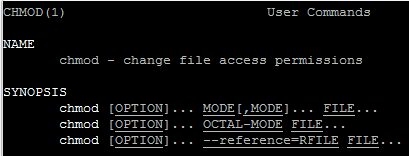
Chmod Command In Linux Alien Coders

Chmod Command In Unix Unix File Permissions Chmod With Examples Chwn Command Chgrp Command Unmask

Linux Chmod Command Summary With Examples Youtube

Linux File Permissions Complete Guide Devconnected

Linux Chmod Command Javatpoint
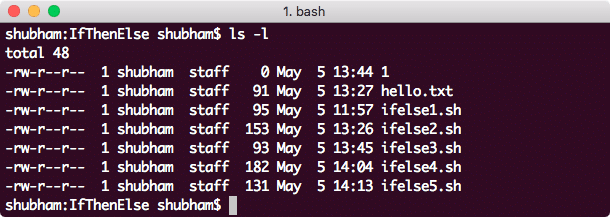
Linux Chmod Example Linux Hint

Chmod Wikipedia

7 Examples Of Command Chmod On Linux And Explanation

How To Chmod Files Only On Linux

Linux Commands Chmod

Chown Command In Linux Unix Explained With Examples The Linux Juggernaut
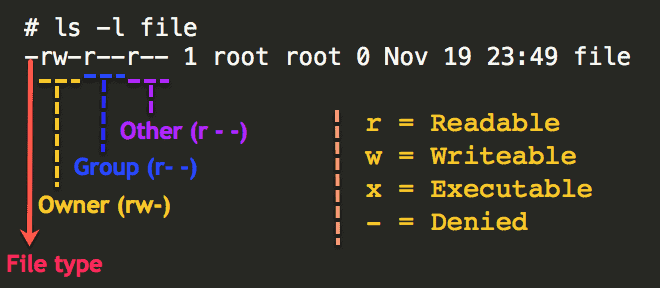
Understanding Basic File Permissions And Ownership In Linux The Geek Diary

Solved Outcome Unix And Your First Program 1 The Comman Chegg Com
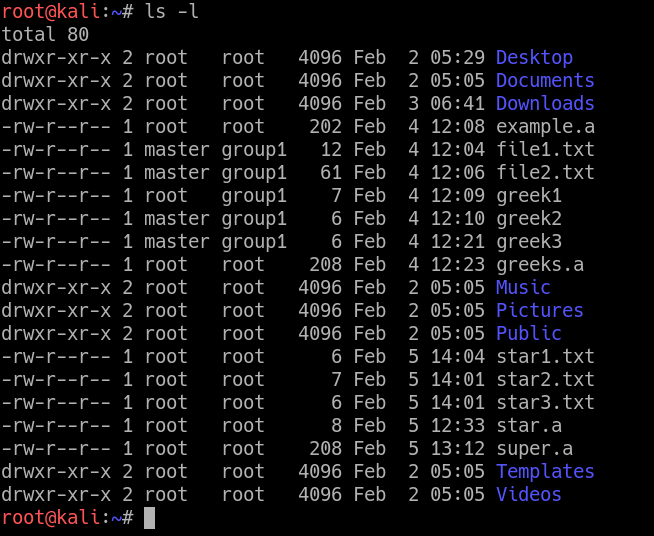
Chown Command In Linux With Examples Geeksforgeeks

How To Use Chmod Command In Linux Explained With Examples

Chmod Command

Linux Chmod Command Clearly Explained Codedodle

Javarevisited 10 Example Of Chmod Command In Unix Linux

Change File And Folder Permission On Ubuntu Chmod Chown Command In Linux Youtube
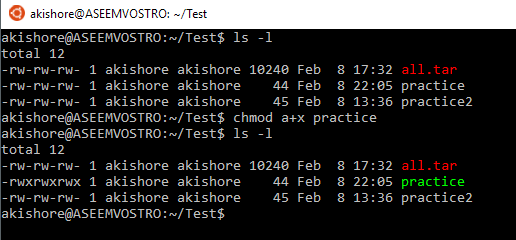
Understanding Linux Permissions And Chmod Usage

How To Use The Chmod Command On Linux

8 Linux Chmod Command Examples To Understand It The Linux Juggernaut
Your Own Linux Chmod Basics Of Files Directories Permissions And Use Of Chmod

Chmod 777 What Does It Really Mean Make Tech Easier

Chmod Command In Linux With Examples Geeksforgeeks
Q Tbn 3aand9gcs J72hjomdluhqe6xjivy M6yrjmkqx9x3z3ps Rpnb8by3w7z Usqp Cau

How To Use Chmod Command In Linux Explained With Examples

How To Get And Install Linux Games Full Tutorial A K A Everything You Wanted To Know About Linux Games
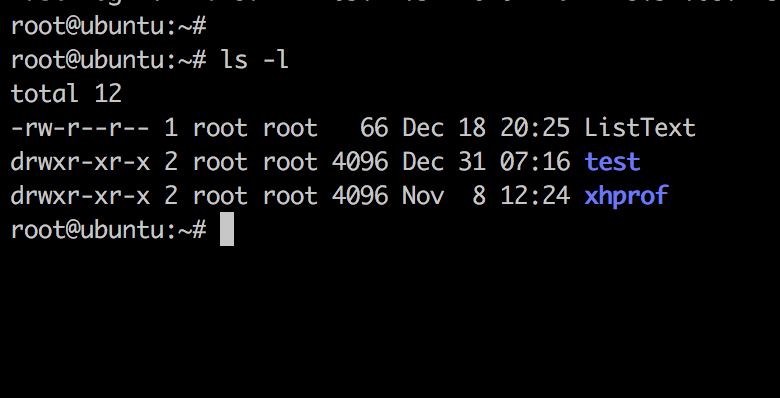
Linux Chmod Command Linuxfordevices

Linux File Permissions Tutorial How To View And Change Permission

Use Of Chmod Command In Linux Devopsdex

Chmod 777 In Terminal The Command To Make All Changes Affect Every File And Folder Ask Ubuntu

Chmod 777 755 655 644 And More Permissions Linux Files Tutorials
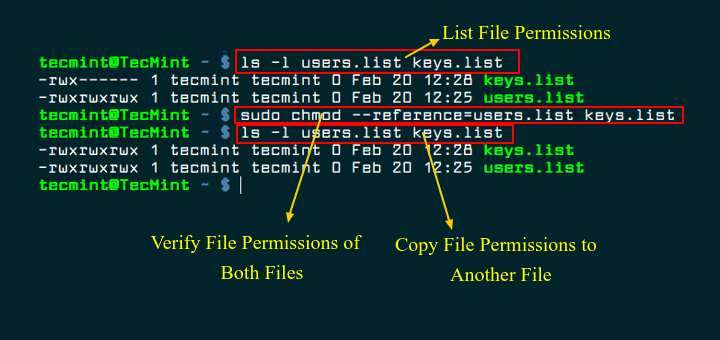
How To Copy File Permissions And Ownership To Another File In Linux

Use Of Chmod Command In Linux Devopsdex

Chmod Calculator Chmod Generator Chmod Command
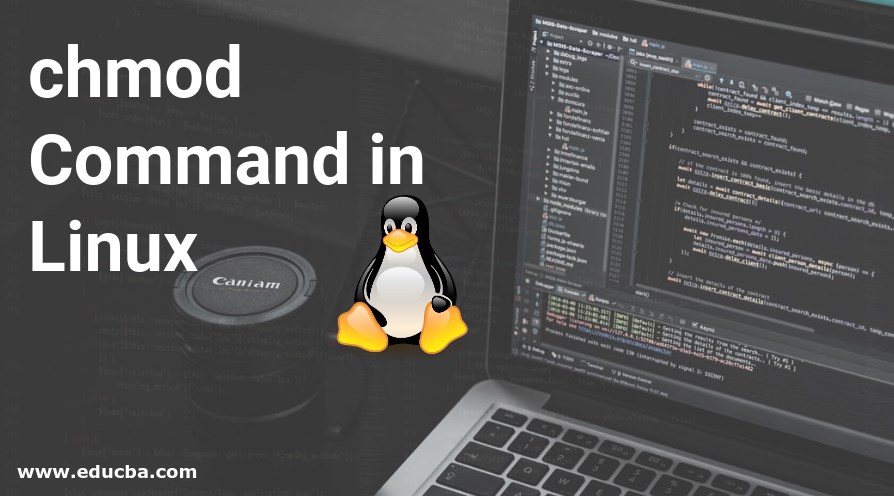
Chmod Command In Linux Operators Used In Chmod Command

Linux Unix Changing Permissions With Chmod Vinish Kapoor S Blog
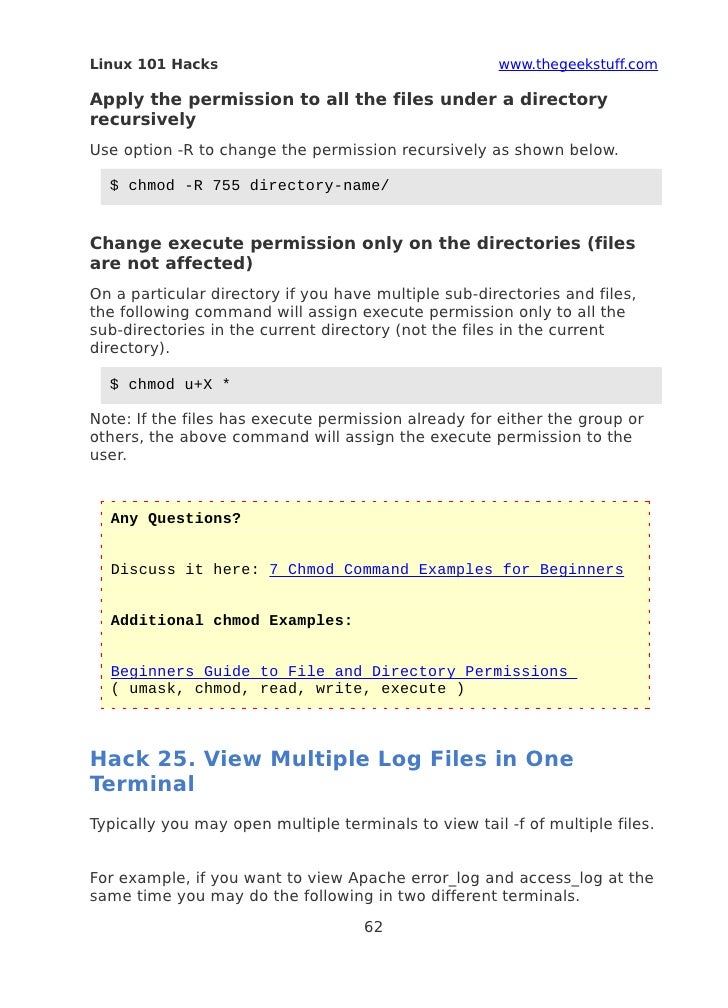
8 Linux Chmod Command Examples To Understand It The Linux Juggernaut
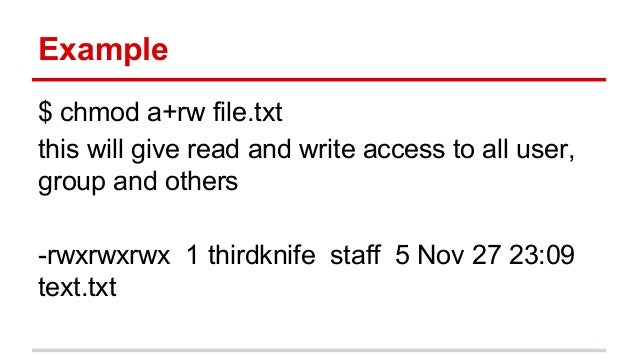
Give Write Access Chmod Command

How To Use The Chmod Command On Linux
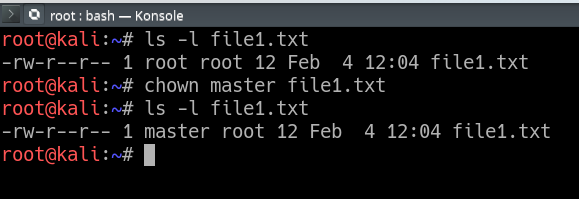
Chown Command In Linux With Examples Geeksforgeeks
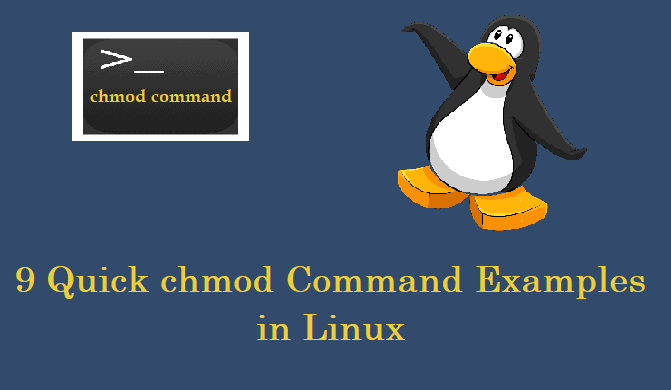
9 Quick Chmod Command Examples In Linux

50 Most Frequently Used Unix Linux Commands With Examples
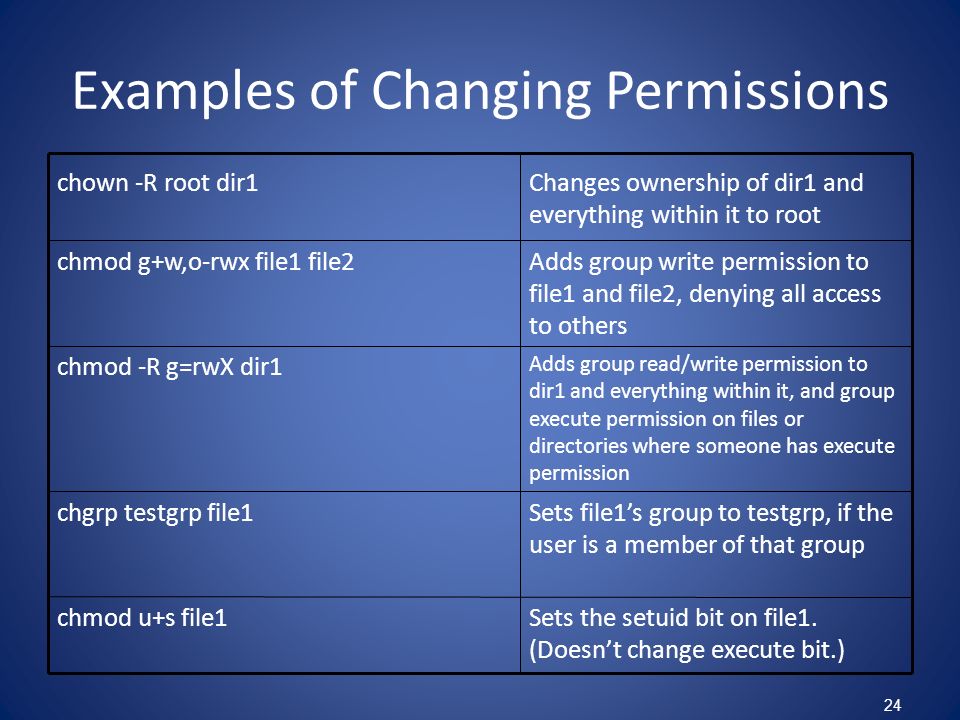
Permissions Why Use Chmod Instead Of Chmod U Rw Go R Unix Linux Stack Exchange

Modify File Permissions With Chmod Linode

Chmod Recursive Change Permissions Recursively On Files Folders

How To Change File Permissions Recursively With Chmod In Linux

Basic Commands In Kali Linux Learn Penetration Testing

Ownership And Permissions
:max_bytes(150000):strip_icc()/i7guGwCYcn-34e068e148ae4e918b29c86cd2d5740e.png)
Configuring Unix Linux File And Directory Access Rights

Umask Wikipedia

12 Frequently Used Hadoop Hdfs Commands With Examples Usage Dataflair
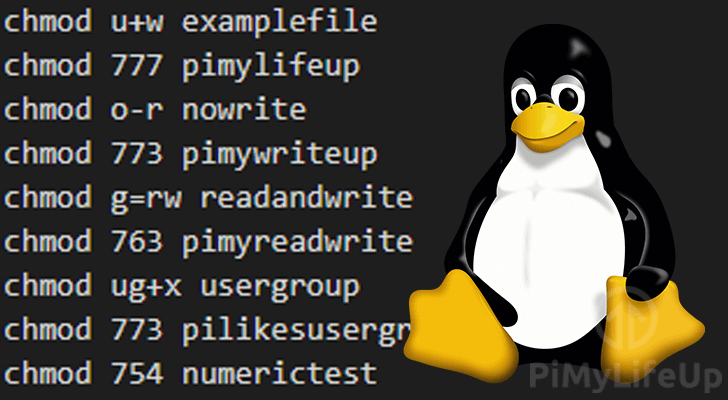
The Basics Of The Chmod Command Pi My Life Up
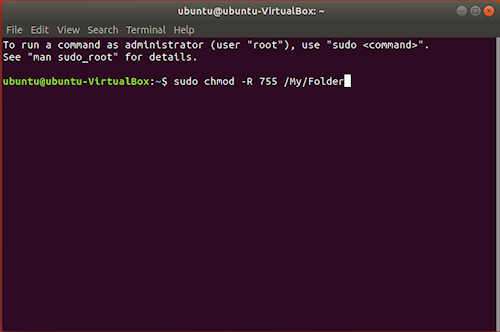
Introduction To Linux File Permissions Attributes Chmod Globo Tech

Learning The Shell Lesson 9 Permissions
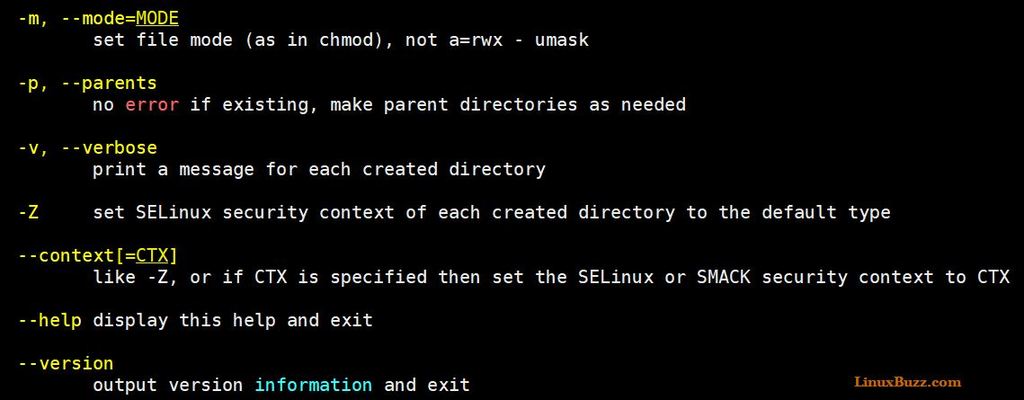
8 Useful Mkdir Command Examples For Linux Users

8 Linux Chmod Command Examples To Understand It The Linux Juggernaut

Linux File Permission Javatpoint

Chmod Recursive Change Permissions Recursively On Files Folders
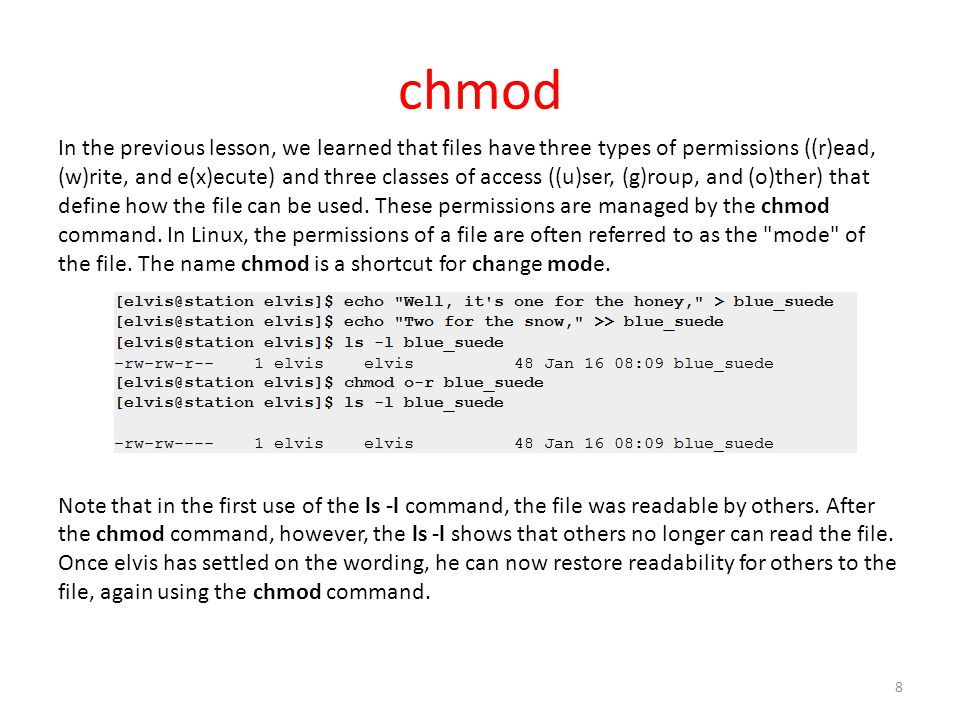
Workbook 4 File Ownerships And Permissions Ppt Video Online Download
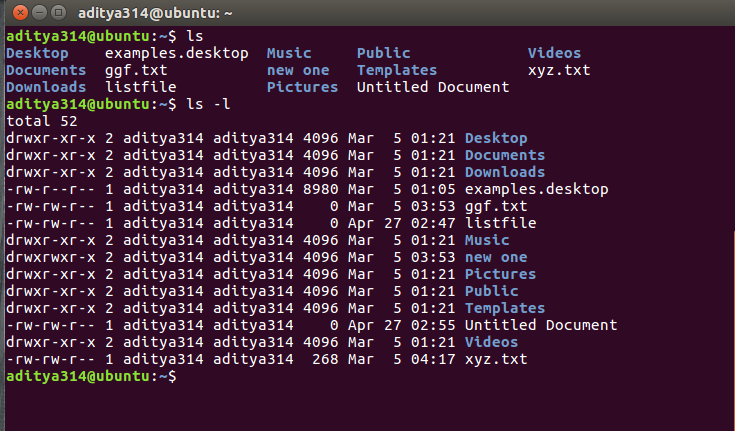
Permissions In Linux Geeksforgeeks
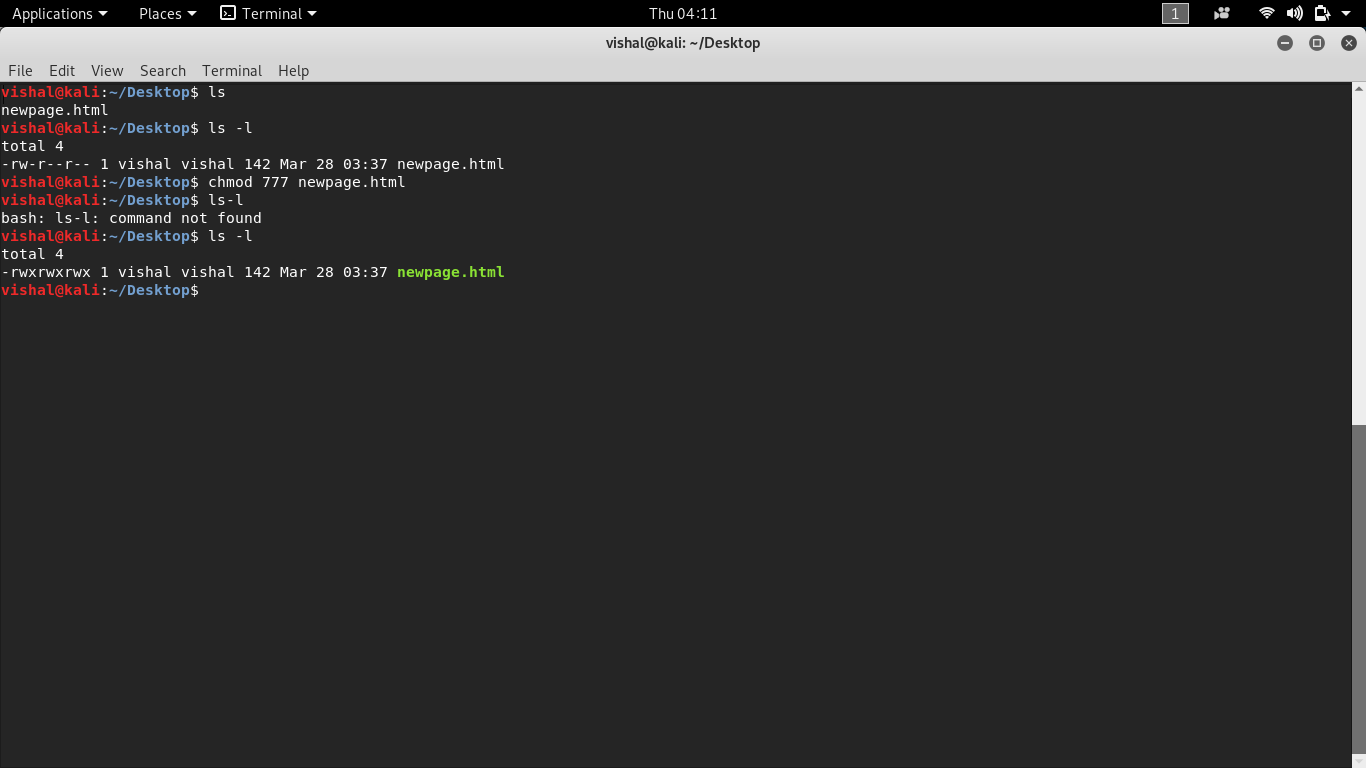
Unix Commands Basic To Advanced Unix Commands With Example

9 Quick Chmod Command Examples In Linux
Q Tbn 3aand9gcs Trmaopb41lzfo2wl Mi6olorurkywaddbudhnw Ne1mor3ct Usqp Cau

How To Use The Chmod Command 2 Minute Linux Tips Network World

Linux Chmod Command Utility Software Computer File
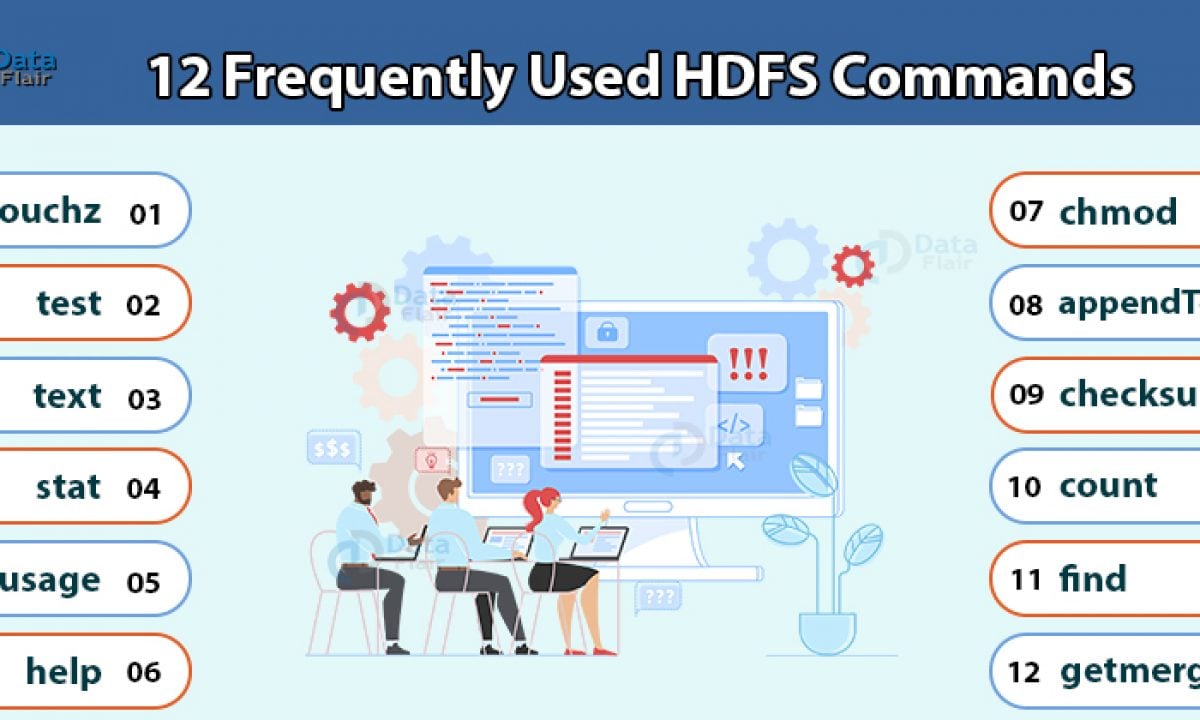
12 Frequently Used Hadoop Hdfs Commands With Examples Usage Dataflair
/GettyImages-1021092796-ea8c63ee76f84bd5bf98c4222337fbb4.jpg)
How To Use The Chmod Command In Linux

Understanding Linux Permissions And Chmod Usage

Chmod Command In Linux File Permissions Linuxize

Chmod Command In Linux With Examples Geeksforgeeks

Restore Executable Permission To Chmod Command In Linux Ostechnix

Numeric Permissions Table Linux Chmod Command Linux Permissions

Restore Executable Permission To Chmod Command In Linux Ostechnix

Chmod 777 755 655 644 And More Permissions Linux Files Tutorials

Linux Chmod Command Tutorial With Examples To Change Permission Of Files And Folders Poftut
Q Tbn 3aand9gcs Trmaopb41lzfo2wl Mi6olorurkywaddbudhnw Ne1mor3ct Usqp Cau
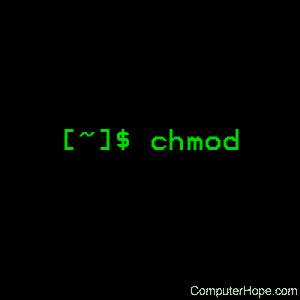
Linux Chmod Command Help And Examples

How To Use Chmod Command In Linux Explained With Examples

Linux Chmod Chown Syntax And Chmod Chown Examples

Linux File Permissions Tutorial For Beginners

Linux And Unix Chmod Command Tutorial And Examples Xsofthost
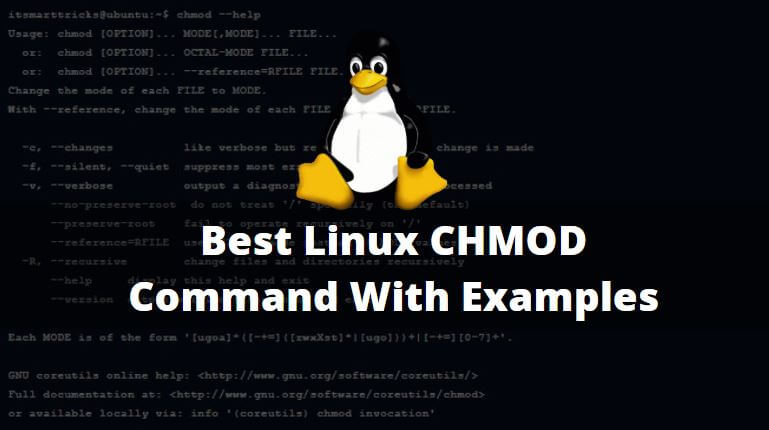
Best Linux Chmod Command With Examples It Smart Tricks
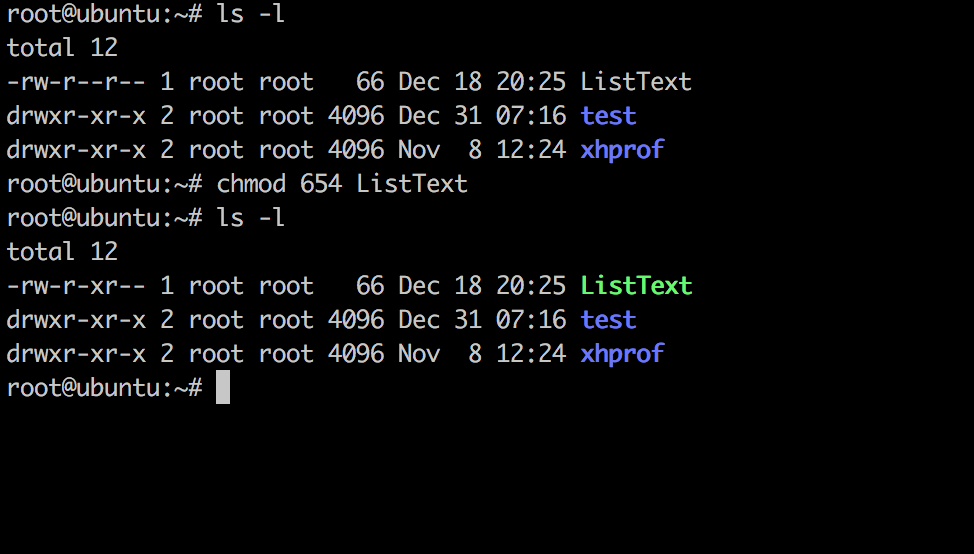
Linux Chmod Command Linuxfordevices

Chmod Command In Unix Learn Unix Online Fresh2refresh Com

11 Popular Unix Linux Chmod Command Examples To Change File Permissions Cyberithub

How To Use Chmod Command In Linux Explained With Examples

Chmod Command Examples In Unix Linux Lpi Central

Linux Commands 5 File Permission Chmod Youtube

Linux Chmod Chown Syntax And Chmod Chown Examples
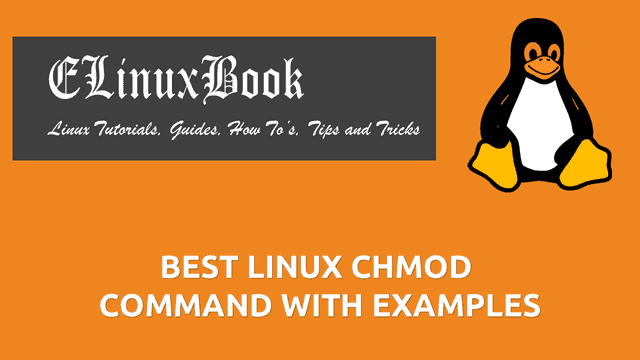
Best Linux Chmod Command With Examples

Chmod 777 Or 755 Learn To Use Chmod Command With Examples



